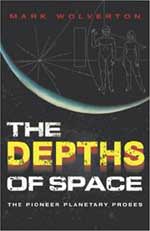The project plans are being developed by a consortium of institutions headed up by Cornell, and funded by the National Science Foundation among others. The SKA plans are loosely based on the ideas being implemented by the Allen Telescope Array (ATA). The ATA is an array of 350 six meter dishes funded by Microsoft philanthropist Paul Allen specifically for SETI research. Note that the science and technology for using interferometers for radio has now reached a stage where this instrument can be built. While this transcontinental technique may be employable for microwaves in the decades ahead, infrared, optical, and x-ray interferometers (several connected telescopes) still require a short direct path of the light to follow, so that the images can be combined using optical, not electronic, means.
The 1.4 billion dollar SKA project should have a final design, and locations defined by 2007, with construction beginning by 2010, and it should be complete and operational by 2015. The array itself will have a core central array of 3300 dishes, and 160 outlying stations of about 7 dishes each covering a broad area of North and Central America.
When complete this tool will have the sensitivity of a single dish, 800 meters in diameter, which is on the order of a hundred times more sensitive than any steerable dish on the planet today. It is also about ten times the sensitivity of the giant dish at Arecibo, which is also operated by Cornell. At its shortest wavelength, the array will be able to image sources to a scale of 500 micro-arcseconds, which is about 15 light-years at the Andromeda galaxy [M31], or a few hundred AU when mapping nearby molecular clouds in our own galaxy.
With all this new detection capability will come a great deal of new science. This month, peer review journals and other sources are getting ready to print numerous papers proposing work that can be done with this instrument. Some of the science goals will help us observe the universe before the first stars formed, and will answer detailed questions about an epoch much earlier than will be seen by the upcoming James Webb Space Telescope. Among the science goals are: Mapping the star formation history and large-scale structure of the Universe, tracing the star formation history over cosmological time, and studying of the Sunyaev-Zel’dovich effect at high redshifts, which some say may have contaminated observed Cosmic Microwave background radiation, and altered the apparent age and dark matter density of the universe. Many of these observations will be done looking at the highly redshifted 21-cm line from neutral hydrogen.
Other science goals include tracing out the magnetic field structure in parsec to Megaparsec jets, in normal galaxies and in distant clusters of galaxies, as well as locate distant (z > 2) clusters, probing strong gravitational fields and the cosmological evolution of super-massive black holes, identifying radio transients 100 times fainter than we can now see, probing the scintillating universe and exploiting super-resolution phenomena, identifying the overall structure, discrete components, and turbulent and magnetic properties of the Milky Way and nearby galaxies, a Milky Way census of faint old pulsars and other compact objects, searching for brown dwarfs in the local Galactic environs and mapping thermal emission from nearby stars, as well as inventorying and tracking solar system debris such as asteroids, comets, and KBOs.
A recent paper points out that the SKA can be used to receive data rates hundreds of times faster than the current Deep Space Network from very distant space probes for short periods, such as from the ESA?s proposed tiny Pluto Orbiter Probe, or NASA?s New Horizons mission to the Kuiper belt.
The SKA will be a versatile instrument with capabilities far beyond what are available in today?s instruments. For radio astronomy, the SKA is the shape of things to come.
Links:
SKA site
SKA Design strawman paper
Allen Telescope Array website
Author: John A. Cross

